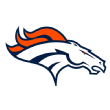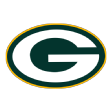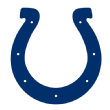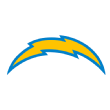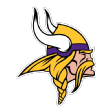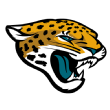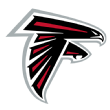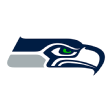Ranking the most impactful injuries of NFL Week 2: Nick Bosa, Saquon Barkley, Drew Lock and more

Sunday started with 49ers running backRaheem Mostert taking a pitch from quarterbackJimmy Garoppolo and bursting up the sideline for an 80-yard touchdown. It ended with the Seahawks making a goal-line stand and stopping Patriots quarterbackCam Newton to end a classic game in Seattle. In between those two moments, a star player seemed to go down with an injury every five minutes. Both Garoppolo and Mostert were done by halftime, two of five starters the 49ers lost in New Jersey.
You could make a pretty talented roster out of the players who were injured in Week 2. The list includes three starting quarterbacks, the top two fantasy picks in most drafts, the league's leading wide receiver from Week 1, an offensive line that would rank among the best in football and most of a solid front seven. On a day when we would typically be talking about an incredible comeback by the Cowboys and a brilliant battle between two great quarterbacks in Newton and Russell Wilson, we're instead talking about how many players are either shelved for the season or likely to miss time.
The first question I was asked when this rash of injuries popped up Sunday involved the missing preseason: Would these players have been as likely to suffer soft-tissue injuries if the NFL had been operating under a typical preseason schedule? It's impossible to say, but I'm not convinced. In reality, many of the star players who were hurt would have seen only a handful of snaps in one preseason game. Players such asSaquon Barkley and Nick Bosa didn't play at all during the 2019 preseason. Padded practices were reduced this summer, but prior reductions in practice time did not lead to more injuries.
If we had seen more soft-tissue injuries in Week 1, when players were ramping up to full regular-season activity without a preseason, there would be a stronger link between the missing preseason and the increased injury rate. As it is, randomness is the most likely explanation for what caused the Week 2 spike, unless we see a similar attrition rate in the weeks to come.
For now, I want to run through this week's injuries and detail how they're going to impact their current teams. All injuries are bad, and one injury isn't more or less meaningful than another, but some impact the NFL season more than others. I'm going to try to go through the injuries in order of relative impact given what we know about each situation as of early Monday morning. This won't include players who returned to the game after getting hurt, such as Bears running back David Montgomery or Cowboys quarterback Dak Prescott. We'll start with the 49ers:
Jump to a player who was injured:
Adams | Barkley | Bosa
Campbell | Fuller | Garoppolo
Lock | McCaffrey | Mostert
Sutton | Taylor | Young
1. Nick Bosa, DE, San Francisco 49ers
Injury: Torn ACL
The 49ers have been waylaid by injuries on both sides of the ball, but one of their most irreplaceable players went down for the seasonin Week 2. Bosa reportedly tore his ACL early in the 49ers' 31-13 victory over the Jets, and while a torn ACL isn't the sort of career-threatening injury it might have been 30 years ago, it would take a miracle or a misdiagnosis for Bosa to avoid missing the remainder of the season. I can't recall the last time a player was diagnosed with a likely torn ACL on Sunday before the standard follow-up imaging on Monday said something different.
Bosa, the No. 2 overall pick in the 2019 draft, was one of the biggest additions to the 49ers' defense when coordinator Robert Saleh's unit took a step forward last season. He played a full season, racking up nine sacks and 25 hits before adding four more sacks in the postseason. Bosa would have been a viable Super Bowl MVP selection if the 49ers had held on to their lead against the Chiefs. The Ohio State product played 76% of the defensive snaps as a rookie, and when he wasn't on the field, San Francisco's passer rating allowed jumped by 10.5 points.
ESPN Daily podcast:Barnwell discusses the severity of injuries around the league
San Francisco also lost 2017 No. 3 pick Solomon Thomas to an as-yet-undetermined knee injury Sunday, leaving what was a vaunted defensive line as recently as February suddenly thin after just two games. DeForest Buckner is now in Indianapolis. Dee Ford already missed Week 2 with a neck injury, and even when healthy, the Niners have typically preferred to use the former Chiefs rusher as a passing-down specialist while playing about 55% of the defensive snaps. If Bosa, Ford and Thomas are all out for Week 3, they will be down to Arik Armstead, Javon Kinlaw, Kentavius Street, D.J. Jonesand Kerry Hyder up front. I'll talk more about that Week 3 game in a bit.
In the big picture, the 49ers should get Ford back and will likely have to use the 29-year-old in an expanded role. It wouldn't be shocking to see an aggressive front office pursue options near the trade deadline, when someone like Ryan Kerrigan could come available. There's also a deep market of veteran free agents at the position. The 49ers just had Ezekiel Ansah in for a visit and could sign the former Lions standout once Bosa goes on injured reserve.
2. Saquon Barkley, RB, New York Giants
Injury: Torn ACL
While Barkley is expected to make a full recovery from a torn ACL, this is more of a long-term disaster for the Giants than a short-term concern. While Joe Judge's team probably wasn't going to compete for the NFC East title this season, Barkley's injury probably sets the organization back a year as it continues to rebuild.
To start, his injury makes it more difficult to evaluate Daniel Jones. The Giants attempted to surround their quarterback with a bevy of weapons in Barkley, Evan Engram, Sterling Shepardand Golden Tate, then landed on a steal in the fifth round when they unearthed Darius Slayton in the 2019 draft. Those five players have been on the field together alongside Jones for a total of five snaps, all coming in Sunday's 17-13 loss to the Bears before Barkley tore up his knee.
This wasn't going to be a make-or-break year for Jones, but Barkley's absence puts more of the load on his shoulders and provides an easy excuse if he struggles. By the time 2021 starts, he will have made as many as 28 pro starts and have played alongside a healthy Barkley for a full game in just one of them: last Monday's loss to the Steelers. Barkley suffered a high ankle sprain in Jones' first start against the Buccaneers last season, missed three games and wasn't his old self on a regular basis after returning.
His injury also gives an easy out to general manager Dave Gettleman, who can argue after the season that the Giants need to see what they have with his three top-five offensive picks -- Jones, Barkley and offensive tackle Andrew Thomas-- all on the field at the same time. This realistically needed to be a deciding year on Gettleman's controversial reign with the team, especially after 2019 first-rounder Deandre Baker was cutafter a disastrous debut season and an arrest for armed robbery.
Barkley didn't have a serious injury history at Penn State, but the Giants chose him with the No. 2 overall pick in 2018 because he was supposed to be a player who transcended the typical concerns about running backs. While it's through little fault of his own, he has not. The Giants haven't had a consistently effective running game with Barkley because their offensive line has been a mess. If the ACL tear is confirmed, he will have now spent most of the past two seasons either injured or greatly limited by injuries. His injury, strangely, may buy Gettleman more time.
This also pushes back Barkley's timeline for an extension, one Gettleman would have likely been happy to hand out to prove that he had made a successful pick. Fellow high draftees such asChristian McCaffrey and Ezekiel Elliott have signed extensions after their third seasons, but they were coming off successful campaigns without significant injuries. New York will pick up Barkley's fifth-year option for 2022, and I think he should be able to return to full health for the 2021 season, but if Barkley had stayed healthy in 2020, he would be signing an extension in the spring of 2021. Now, that deal probably won't come into play until the spring of 2022.
The Giants nearly overcame Barkley's loss to come back and beat the Bears while using Dion Lewis as their primary back. The former Patriots and Titans starter, who turns 30 on Sunday, fielded 54 of the 62 snaps. He should continue to be the leader in the backfield, although he has a significant injury history and struggled as a feature back in Tennessee. Wayne Gallman could be involved as part of the rotation, while former Cowboys back Robert Turbin is a free agent and familiar with Giants offensive coordinator Jason Garrett.
The Giants also lostShepard to a toe injury, and while he returned for one play, he then left for the remainder of the game. If the injury is serious, it would cost Jones another weapon. Given that the Giants have a pair of players who work best out of the slot in Shepard and Tate, though, I don't think the Shepard injury is anywhere near as significant as Barkley's.
3. Christian McCaffrey, RB, Carolina Panthers
Injury: High ankle sprain(updated Monday at 1 p.m. ET)
Reports after Sunday's game suggested that McCaffrey felt like he was just dealing with a minor ankle injury, but an MRI on Monday confirmed that the star back and consensus first overall fantasy pick was dealing with the dreaded high-ankle sprain. The injury will keep McCaffrey out for several weeks, but this is going to drastically impact the rest of CMC's season, whether he's on the field or not.
Star players have a way of trying to force their way back onto the field to play through an injury, but history suggests that's a bad idea and creates the possibility for a more serious injury. We've seen players like Adrian Peterson and Odell Beckham Jr. rush their way back from high-ankle sprains and then suffer a season-ending injury shortly after returning. Peterson returned to an MVP level, but while Beckham still has time to prove what he can do, the star wideout averaged 95.8 receiving yards per game before the injury and 73.1 yards per game afterward.
While I don't think McCaffrey is at risk of a long-term injury if he takes the appropriate time off, there are players who have had their careers greatly impacted or even shortened by high-ankle sprains. Roddy White came off a 1,351-yard season in 2012, tried to play through a high ankle sprain in 2013, and never came close to hitting his old level of play across his final three years in the league. Mohamed Sanu played through one last season with the Patriots and didn't have enough burst to make the team this year.
All of this is to say that the Panthers need to be conservative and patient with their star back. They're 0-2 and have a league-low 2.4% chance of making the playoffs in 2020. Coach Matt Rhule is in Year 1 of a long-term contract. So is McCaffrey, who signed a four-year, $64 million extension before the season. There's no reason for the Panthers to let McCaffrey back onto the field anytime soon. The running back is expected to miss "multiple weeks," per ESPN's Adam Schefter, and the Panthers should err on the side of caution as they wait for McCaffrey to return.
This injury is a reminder of how difficult it can be to make a running back contract work. McCaffrey would have been the prototype for backs who could serve as an exception to the rule, given that he offered such significant value as a receiver and had a pristine injury record before 2020. It is incredibly difficult to play running back at a high level and stay healthy.
While I don't think the Panthers have mismanaged McCaffrey this season, it calls his significant usage rate from a year ago into attention. He played more than 1,000 offensive snaps a year ago when no other running back topped 900. He touched the balla league-leading 403 times, 48 touches ahead ofEzekiel Elliottin second. Seventy-seven of those touches came when the Panthers' win expectancy was at or below 5%, 16 more than any other player. Those touches were great for fantasy football, but they probably weren't great for McCaffrey.
Much like the preseason argument, we can't prove that those touches and snaps from a year ago helped wear McCaffrey down or caused him to suffer an ankle injury this year. The two might not be related at all. What we can say, though, is that just about everything has to go right for a player to have the sort of season McCaffrey did in 2019, health included. Now that the Panthers have signed McCaffrey to a massive extension, while it wouldn't have changed anything about 2020, it might make sense to spot their star back a little more rest in situations where the game is out of hand.
Former Seahawks and Bears backMike Davis, McCaffrey's backup, played 23 of the 25 snaps in which McCaffrey wasn't on the field. If McCaffrey were to miss time, Davis would presumably take over a significant workload, although he doesn't really have the same sort of versatility as a receiver.
4. Drew Lock, QB, Denver Broncos
Injury: Sprained AC joint
Speaking of injuries that set back an evaluation window, the Broncos were clearly using 2020 to evaluate what they had in Lock, a second-round pick last year. General manager John Elway loaded up the team with weapons, imported Pat Shurmur as offensive coordinator and dared Lock to prove that his impressive five-game stint as the starter at the end of 2019 was an example of what the Broncos could expect if they built the franchise around him.
Lock had an uneven Week 1 start against the Titans, and after separating his shoulder in the first half against the Steelers on Sunday, he'll miss two to six weeks, with the schedule subject to what doctors find when Lock has an MRI this week. We've seen quarterbacks play through sprained AC joints in the past without missing time, including Ben Roethlisberger in 2016 and Jameis Winston in 2017, but Lock's injury might be more severe.
If we split the difference and Lock misses a month, he would return for the Week 7 game against the Chiefs before Denver's Week 8 bye. It would mean that he played about two games of meaningful football across the first half of the season, giving the Broncos a half-season to evaluate him in advance of the 2021 offseason. Is that enough to decide whether the 2019 second-round pick is Denver's quarterback of the future? Or will that lead Elway to recommit to Lock and give him another chance at the starting job in 2021? If the Broncos do that and Lock isn't their guy, they'll have wasted the better part of two years in the process.
The Broncos released Joe Flacco in March to get out from under his $20.3 million base salary, but they didn't really do much to fill in the roster behind their new starter. Despite the fact that Cam Newton was a free agent and would eventually sign with the Patriots for less guaranteed money, they inked former Bengals and Lions backup Jeff Driskel to a two-year, $5 million deal. Driskel is a good athlete and -- crucially for Elway -- 6-foot-4, but he posted a passer rating of 79.6 across his first 281 career pass attempts with a sack rate of 8.8%.
Driskel had his moments Sunday and did relatively well coming off the bench against a fearsome Steelers defense, but he took six sacks on 40 dropbacks for a 15% sack rate. It's tough to stay healthy getting hit that frequently, and if Driskel were to get injured, the Broncos would be down to practice-squad passer Brett Rypien. (Backup running backRoyce Freeman was the emergency quarterback Sunday.) It's only Week 2, but it's hard to feel like this is going to be much more than a lost season for the Broncos unless Lock's injury isn't as significant as it seemed.
5. Courtland Sutton, WR, Denver Broncos
Injury:Torn ACL (updated Monday at 1:10 p.m. ET)
Drew Lock's biggest weapon heading into 2020 may also be out for an extended period of time. Sutton missed Week 1 with his own sprained AC joint, and while the third-year wideout was able to make it back on the field for the Steelers game, he suffered a knee injury while tackling Joe Haden on an interception return at the two-minute warning of the first half and did not return.
While the in-game reports suggested that Sutton was missing time with cramps, stories after the game suggested that the Broncos were bracing for the possibility Sutton had suffered a more serious knee injury. Indeed, a report on Monday confirmed that the talented wideout had torn his ACL.
Denver has other options with players like Jerry Jeudy, KJ Hamlerand Noah Fant in the mix, but Jeudy himself missed time on Sunday after taking a hit over the middle of the field, and Sutton's presence was supposed to make all of those guys better. Like Barkley, the ACL tear will also likely push Sutton's timetable for an extension back by a year. Lots of teams are dealing with injuries right now, but the Broncos may have lost their starting quarterback and their best player on both offense and defense (Von Miller) in a matter of three weeks.
6. Jimmy Garoppolo, QB, San Francisco 49ers
Injury: High ankle sprain
Unlike Lock, Garoppolo should be able to play through his injury, given that he was able to do so against the Jets in the first half before sitting out the second half of the contest. We've seen quarterbacks like Peyton Manning and Ben Roethlisberger play through high ankle sprains in the past, but the results have been mixed. Roethlisberger threw three interceptions in a 2011 loss to the 49ers after his ankle injury and wasn't really right the rest of the season, while Manning barely missed a beat and went on to win league MVP in 2013. Daniel Jones missed several games with a high ankle sprain last season.
Injuries impact different positions differently. A high ankle sprain is a disastrous injury for a running back or wide receiver, but it's not as concerning for a quarterback. Garoppolo would be worse off if he scrambled on any sort of regular basis, but that's not really his game. While hedoes have a propensity for spin moves, he will respond to pressure on one snap with a triple spin move and then to pressure on the next step by standing totally flat-footed in the pocket, seemingly deep in thought while looking downfield. The ankle issue shouldn't impact his mobility.
There are two places where the injury could be a problem. One is in the movement that the 49ers do ask Garoppolo to make. While coach Kyle Shanahan sprung two long runs off pitches against the Jets on Sunday, the 49ers typically build their offense around the outside zone and play-action off that core concept, both of which ask the quarterback to take a number of steps and hit a particular mesh point at an exact time. Those steps are going to be painful, and it might throw off the timing of the run game. I wonder whether Shanahan will use more pitches to keep some of the stress off Garoppolo's ankle and footwork over the next few weeks.
The other is with footwork on passing plays. Quarterbacks with ankle or foot injuries who are struggling to plant their feet with the usual authority tend to sail passes and throw more interceptions. Garoppolo already had issues with his footwork and planting after recovering from his torn ACL last summer, famously throwing five consecutive picks in practice and looking awful in a preseason start before settling down. A healthy Garoppolo is prone to some questionable decisions, so his interception rate could rise in the weeks before his ankle heals.
While he should be able to play through the injury, there are also a couple of reasons the 49ers might prefer to sit their starter. One is that their schedule isn't particularly tough -- they play the Giants, Eagles and Dolphins over the next three weeks. The other is that they might not want to risk a more severe injury. Shanahan said after the Jets game that his team was frustrated by the turf at MetLife Stadium and felt like the "sticky" surface had led to a number of their injuries.
This normally wouldn't be an issue, but they will head back to the same stadium for a road game against the Giants on Sunday. Shanahan can't sit his entire team, but it wouldn't shock me if he rested Garoppolo for a week to get him away from the turf. The team has a lot of faith in backup Nick Mullens, and while the former undrafted free agent didn't do much against the Jets, Mullens posted a QBR of 51.7 on 274 pass attempts in 2018.
7. Davante Adams, WR, Green Bay Packers
Injury: Hamstring
Likewise, it's unclear whether Adams has a significant hamstring issue. The Week 1 star had a quiet game in the Packers' 42-21 win over the Lions, catching just three passes while dealing with an ankle injury and then a hamstring. The Packers didn't need Adams and were comfortably ahead when he went out in the third quarter, so there's a chance Matt LaFleur was just being prudent and resting his key receiver.
If Adams does need to miss time, well, you already know that there's not much in the cupboard. The Packers have an early bye in Week 5, which could make for a natural timeline if Adams does have a meaningful issue. In that scenario, they would be without their star for the Sunday night game against the Saints and against the Falcons on Monday the following week. If this injury turns out to be little more than cautionary rest, Adams wouldn't be this high.
8. Tavon Young, CB, Baltimore Ravens
Injury: Knee
While we don't have the specifics, coach John Harbaugh suggested after the game that his slot cornerback had suffered a season-ending knee injury. If that's true, the Ravens will lose Young for a second straight season, after the 26-year-old missed all of 2019 with a neck injury. Young will have played just one full game since signing a three-year, $25.8 million extension before the 2019 campaign.
He has no more guaranteed money remaining on that deal after the 2020 season, so Baltimore could cut him and create $3 million in cap space if so inclined. The good news for the Temple product is that Young seemed to be fully recovered from his neck injury before suffering this knee injury. A pay cut might be a compromise both sides find reasonable -- he looked to be one of the league's best slot cornerbacks before dealing with the neck and knee injuries.
The good news for the Ravens is that they were arguably the NFL's deepest team at cornerback before Young's injury. Veteran corner Jimmy Smith was running as the team's fourth corner while dealing with back spasms in Week 1, but he could step in as the third cornerback. Smith is not going to play in the slot, but star corner Marlon Humphrey is capable of playing both inside and outside. The Ravens also have Anthony Averett in reserve and a pair of corners on their practice squad.
9. Malik Hooker, S, Indianapolis Colts
Injury: Achilles tendon
General manager Chris Ballard's first draft pick in Indy might have played his last snap as a member of the organization. Hooker missed 14 games over his first three seasons with injuries, including a torn ACL and MCL as a rookie in 2017 and a torn meniscus in 2019. While he struggled to live up to expectations on the field, the Colts this offseason declined the safety's fifth-year option for 2021.
Hooker tore his Achilles tendon during Sunday's 28-11 win over the Vikings, a move that would certainly end Hooker's season and send him to free agency. Indy turned things over to rookie third-rounder Julian Blackmon, who himself is recovering from a torn ACL he suffered in the Pac-12 championship game last season. Blackmon, who sat out Week 1, helped stifle Kirk Cousins and the Vikings' passing attack. Indy was also without cornerbackRock Ya-Sin, who was a late scratch with a stomach illness. Coach Frank Reich can't be thrilled about losing Hooker, but he has to be pleased with his secondary after two starters went down unexpectedly.
10. Brandon Scherff, G, Washington Football Team
Injury: Knee
We're still waiting for more details, but Scherff's injury could be a huge loss for Washington. The 2015 No. 5 pick was forced from Sunday's loss against the Cardinals with a knee injury and did not return, with no further reports on the severity of the injury. QuarterbackDwayne Haskins was sacked four times and knocked down four more in the 30-15 loss.
Scherff is one of the best guards in football. Washington franchise-tagged him for the 2020 campaign, but the sides did not come to an agreement on a long-term contract before the July 15 deadline. If the three-time Pro Bowler's injury is serious, it could leave Washington in a difficult position. A second franchise tag for Scherff would cost more than $18 million, a huge sum for an interior lineman, let alone one coming off a knee injury. Losing Scherff, though, would leave another hole in what might be one of the worst lines in football without the Iowa product. An injury might also force him to settle for a one-year deal in advance of trying to rebuild his value in 2021.
11. Byron Jones, CB, Miami Dolphins
Injury: Groin
The prize of this year's cornerback class in free agency, Jones was dealing with an Achilles issue heading into Week 2 and lasted just four snaps before going down with a groin injury against the Bills. Josh Allen took advantage, going after Nik Needham and Noah Igbinoghene early and often.
Jones missed just one game in five seasons with the Cowboys, which might have made him more attractive to a Dolphins team whose other star corner (Xavien Howard) has missed 24 games over his first four campaigns. There aren't any reports on Jones' status, but the fact that he did not return while the Dolphins were being picked apart by Allen doesn't seem to bode well.
12. Raheem Mostert, RB, San Francisco 49ers
Injury: Sprained MCL
The 49ers were also hit hard at running back, as they lost Mostert to a sprained knee and Tevin Coleman to an undisclosed knee injury. Jerick McKinnon, who missed all of 2018 and 2019 with a torn ACL, ended up taking over as the primary back by the time the fourth quarter rolled around. They also have Jeff Wilson on their roster, and the North Texas product could serve in an early-down role after taking some goal-line reps a year ago.
Mostert's injury sounds like it won't keep him out for very long, which is good news. The undrafted free agent has looked terrifyingly fast this season, racking up long touchdowns in each of the first two games. Expecting a 75-plus-yard touchdown every week is probably too much to ask for, but it sure looks like he is San Francisco's best back. If you're in a deep fantasy league, the 49ers also have JaMycal Hastyon their practice squad.
13. Tyrod Taylor, QB, Los Angeles Chargers
Injury: Chest
There are no secrets when it comes to starting quarterbacks in the NFL. Quarterbacks who are expected to start get reps with the ones in practice, so by the time Sunday rolls around, we almost always know who is playing. When Justin Herbert unexpectedly took snaps for the Chargers to start the game against the Chiefs, it seemed like a rare break in that pattern, only to find out that Taylor was suffering from a chest injury reported after warm-ups and would go to the hospital.
Hours later, the story seems clearer. Taylor hit the injury report on Friday with a rib issue, although there were no suggestions he would miss the game. According to the Chargers, Taylor had trouble breathing before kickoff and went to the hospital, where he was cleared. Coach Anthony Lynn said after the game that he considered Taylor his starter and would expect Taylor to start in Week 3 if healthy.
Here's where it gets tricky for the former Bills and Browns starter. Taylor struggled in Week 1 against the Bengals, posting a passer rating of 75.4 while running six times for just 7 yards. We're almost always too easy to praise highly drafted quarterbacks when they make their first pro appearances -- and Herbert made at least one brutal rookie mistake on his interception -- but the Oregon product did about as well as the Chargers could have hoped given his lack of practice reps and time to prepare.
Herbert finished 22-of-33 for 311 yards and a Total QBR of 75.7, throwing for one touchdown pass and running for another. Coaches love saying that they're going to stick with their veteran starters, but when their rookie quarterbacks impress early in the season, they almost always change their tune. Lynn might not feel quite as much pressure as a typical coach given that there won't be a crowd booing and calling for Herbert to play, but if Taylor struggles with his next opportunity, I don't think he will have much of a choice. Taylor might thankfully be healthy, but his time with the job may be limited.
14. Anthony Barr, LB, Minnesota Vikings
Injury: Shoulder
With the Vikings rebuilding their secondary and missing Danielle Hunter up front, the one thing they seemed able to rely upon on defense was the linebacking duo of Barr and Eric Kendricks. Week 2 took that off the table, as Barr suffered a right shoulder injury and exited the loss to the Colts after 15 snaps. Barr returned to the sideline and supported his shoulder with his left hand before leaving.
This doesn't seem like a minor injury, and it comes after the Vikings were outclassed in each of their first two games. Minnesota also lost backup Troy Dye for a stretch of time on Sunday, although Barr's injury primarily meant an expanded role for core special-teamer and backup linebacker Eric Wilson.
15. Brandon Linder, C, Jacksonville Jaguars
Injury: Knee
One of the NFL's most underrated linemen, Linder was one of the few bright spots for the Jaguars in 2019 and a valuable part of their offense at the pivot. He left Sunday's loss to the Titans with a knee injury and did not return. The Jags are rebuilding and aren't expected to compete for a playoff berth in 2020, but Linder is going to be a building block for the team into the next few seasons, regardless of whether it's Gardner Minshew, Trevor Lawrenceor somebody else at quarterback. Hopefully, Linder's injury won't cost him much time. Tyler Shatley took Linder's place in the lineup.
16. Isaac Seumalo, G, Philadelphia Eagles
Injury: Knee
The last thing the Eagles needed was another injured offensive lineman. Seumalo was blocking on a run near the goal line in the second quarter against the Rams when Miles Sanders rolled up on him from behind. The Oregon State product left the game and did not return, meaning that the only Eagles lineman to make it through the first two weeks of the season unscathed at his expected position is center Jason Kelce. Matt Pryor, who was expected to compete for a starting job once Brandon Brooks and Andre Dillard went down, took over at guard for Seumalo. There were no reports on his status after the game.
17. Parris Campbell, WR, Indianapolis Colts
Injury: Knee
The other significant injury of the day for the Colts belonged to their second-year wideout. Campbell was hoping to impress after having his rookie season spoiled by injuries, and the second-round pick got off to a hot start with a six-catch, 71-yard game in Week 1 against the Jags. The Colts gave Campbell a carry on his second snap of the game, only for the Ohio State product to suffer a knee injury after being hit by Harrison Smith before being ruled out of the contest.
The good news for Campbell is that he avoided an ACL tear, although Adam Schefter reported on Monday that Campbell is out indefinitely with a PCL injury. Rookie Michael Pittman had an increased role and was targeted six times, although the biggest performance for the Colts on Sunday came from third-string tight end Mo Alie-Cox, who took advantage of the injuries to Jack Doyle and Trey Burton to catch five passes for 111 yards.
18. Kaleb McGary, OT, Atlanta Falcons
Injury: Sprained MCL
As you may have heard, things didn't go well for the Falcons on Sunday. Lost in the shuffle may have been the knee injury suffered by their starting right tackle. McGary, who I mentioned as one of the 40 most compelling people in the league heading into the season, went down with a knee injury in the first quarter of Sunday's crushing loss to the Cowboys and didn't return.
ESPN's Adam Schefter later reported that McGary had sprained his MCL. Monday brought a rare piece of positive news for the Falcons, as McGary avoided any further damage and should only be out for a week or two. Swing tackle Matt Gono, who had 42 career snaps before Sunday, took over for McGary and played the remaining 55 snaps, posting a team-best 96.2% pass block win rate in the process.
19. Bruce Irvin, DE, Seattle Seahawks
Injury: Knee
The Seahawks came up with that goal-line stand to beat the Patriots on Sunday night, but they struggled to get pass pressure on Cam Newton during that final drive without the presence of Irvin, who required help getting off the field in the fourth quarter. Coach Pete Carroll said afterward that Irvin was dealing with a sprained knee, which can mean a lot of different things. The Seahawks are paper-thin along the defensive line, so any injury to Irvin would hit them in the weakest part of their roster.
Seattle also lost 2019 second-round pick Marquise Blair to what looked like a serious knee injury. Blair had just come in to replace ejected starter Quandre Diggs but went down after four defensive snaps. He played more than 68% of the snaps in Week 1 as Seattle's third safety, so the Seahawks still had Blair ticketed for a meaningful role on defense, even after trading for Jamal Adams. Carroll said after the game that Blair's injury "... is probably fairly serious."
20. Joe Noteboom, G, Los Angeles Rams
Injury: Calf
While the Rams lost Cam Akers (ribs) and Malcolm Brown (finger) to injuries during Sunday's win over the Eagles, I'm more concerned about the injury to one of their starting linemen. It's easy to find running backs who can work in this Sean McVay offense, but the Rams haven't had as much luck with finding interior linemen after losing Rodger Saffold and John Sullivan before the 2019 season.
Noteboom suffered a serious knee injury in October 2019, but he was good enough upon returning to the Rams to win a starting spot at guard. The Los Angeles offensive line has been better than expected to start the season, so if he misses time with a calf injury, I'm worried a line decline could start poking holes in Jared Goff and the 2-0 Rams.
21. Will Fuller, WR, Houston Texans
Injury: Hamstring
If you didn't notice Fuller during Sunday's loss to the Ravens, well, you had a couple of reasons. One is that Fuller was erased by Marlon Humphrey& Co. during the game, with the Notre Dame product touching the ball once as a runner for 0 yards without ever being targeted. After an eight-catch start to the season, Fuller just wasn't open against the brutal Ravens pass defense.
The other was that Fuller was reportedly struggling to stay loose with a hamstring injury. While he played 36 offensive snaps in the loss, just two of them came in the fourth quarter. The Texans could have been resting him by design, and they were down 17 points with 12 minutes to go, but that's not an impossible obstacle to overcome. Few players in the league have dealt with more injuries over the past five years than Fuller, but his upside when healthy is unquestionable. Coach Bill O'Brien will want a healthy Fuller back in the lineup for Sunday's game against the Steelers, which could now be something close to a must-win for the 0-2 Texans.
The other injuries
Corey Linsley (hand) of the Packers left late in the blowout win over the Lions and did not return. The Packers have already lost Lane Taylor to a season-ending knee tear and only had Billy Turner on the active roster as an emergency lineman in Week 2, so the injuries are already piling up for one of the league's deepest offensive lines. ... The Jets added injury to insult Sunday, with Breshad Perriman (ankle), Chris Hogan (ribs) and Connor McGovern (groin) all leaving the game. Sam Darnold's top weapons for Sunday's game against the Colts could include Frank Gore, Chris Herndonand Braxton Berrios. ... The Cowboys had a league-high nine players on injured reserve and then lost Tyron Smith to a neck injury in practice before Sunday's miraculous win over the Falcons, but their key injury Sunday was defensive back Chidobe Awuzie (hamstring), who sat out the final Falcons drive. ... The Titans were already thin at cornerback with Adoree' Jackson on IR and Malcolm Butler missing practice during the week, but things got worse when Johnathan Joseph (leg) left in the third quarter of the win over the Jaguars and did not return. The Titans probably don't need to worry about a comprehensive passing attack against the Vikings on Sunday, but the Steelers, Bills and Texans are all deep at wide receiver and come to town during a subsequent three-game homestand.
Related Video
Related Topics
- SPORTS
- ESPN
- SAQUON BARKLEY
- JIMMY GAROPPOLO
- ANTHONY BARR
- TYROD TAYLOR
- JUSTIN HERBERT
- DREW LOCK
- BILL BARNWELL
- PARRIS CAMPBELL
- NICK BOSA
- FANTASY NFL
- CHRISTIAN MCCAFFREY
- WILL FULLER-V
- TAVON YOUNG
- BYRON JONES
- LIST
- SAN FRANCISCO-49ERS
- COURTLAND SUTTON
- BRANDON SCHERFF
- NFL
- MALIK HOOKER
- DAILY
- DENVER BRONCOS
- RAHEEM MOSTERT
- JOE NOTEBOOM
- NEW YORK-GIANTS
- DAVANTE ADAMS






